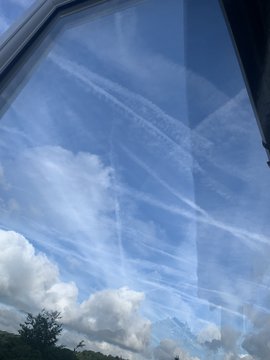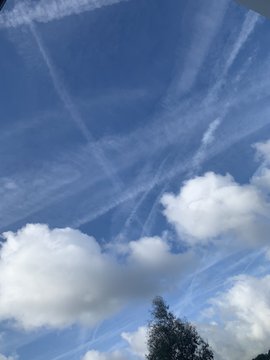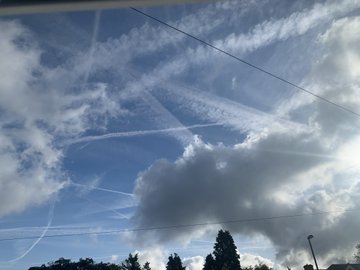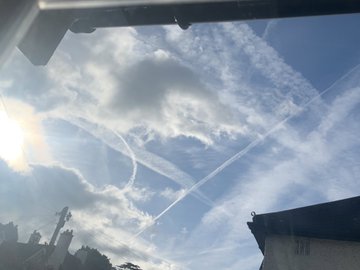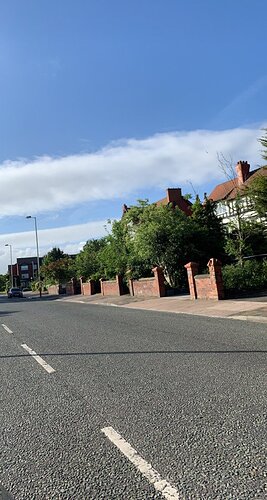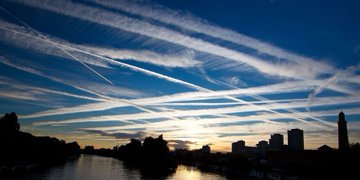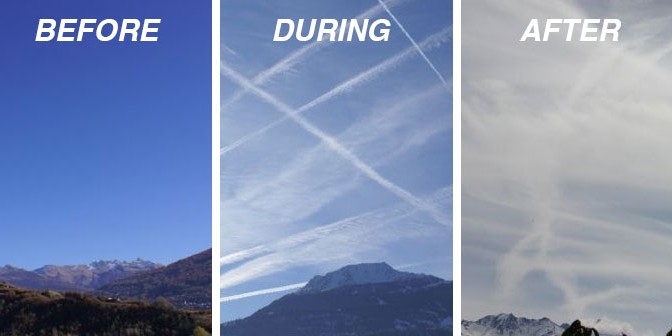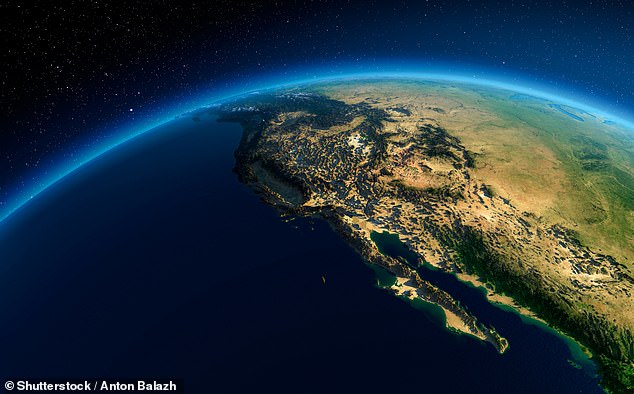"The Oxford Geoengineering Programme seeks to engage with society about the issues associated with geoengineering and conduct research into some of the proposed techniques. The programme does not advocate implementing geoengineering, but it does advocate conducting research into the social, ethical and technical aspects of geoengineering. This research must be conducted in a transparent and socially informed manner.
The University of Oxford is currently involved in four projects on geoengineering - two projects funded by the UK Research Councils and two projects funded by philanthropic foundations.
They are: the Greenhouse Gas Removal by Enhanced Weathering (GGREW) project in partnership with the University of Southampton, Cardiff University and the University of Cambridge; the Comparative Assessment and Region-Specific Optimisation of GGR project with Imperial College London, University College London, the University of East Anglia and the University of Cambridge; the Geoengineering Research Governance Project (GRGP) in partnership with the University of Calgary and the Institute for Advanced Sustainability Studies – Potsdam; and the Greenhouse Gas Removals Instruments and Policies (GRIP) project with the University of Manchester.
The University of Oxford has previously been involved in three major projects on geoengineering funded by the UK Research Councils.
They are: the Integrated Assessment of Geoengineering Proposals (IAGP) in partnership with the University of Leeds, Cardiff University, Lancaster University, University of Bristol, University of East Anglia, the Tyndall Centre and the UK Met Office; the Stratospheric Particle Injection for Climate Engineering (SPICE) in partnership with the University of Bristol and the University of Cambridge; and the Climate Geoengineering Governance (CGG), an Oxford-led project in partnership with the University of Sussex and University College London examined the governance and ethics of geoengineering." http://www.geoengineering.ox.ac.uk/www.geoengineering.ox.ac.uk/index.html
"It’s becoming clear that we won’t cut carbon emissions soon enough to prevent catastrophic climate change. But there may be ways to cool the planet more quickly and buy us a little more time to shift away from fossil fuels.
They’re known collectively as geoengineering, and though it was once a scientific taboo, a growing number of researchers are running computer simulations and proposing small-scale outdoor experiments. Even some legislators have begun discussing what role these technologies could play (see “The growing case for geoengineering”).
But what is geoengineering exactly?
Traditionally, geoengineering has encompassed two very different things: sucking carbon dioxide out of the sky so the atmosphere will trap less heat, and reflecting more sunlight away from the planet so less heat is absorbed in the first place.
The first of these, known as “carbon removal” or “negative emissions technologies,” is something that scholars now largely agree we’ll need to do in order to avoid dangerous levels of warming (see “One man’s two-decade quest to suck greenhouse gas out of the sky”). Most no longer call it “geoengineering”—to avoid associating it with the second, more contentious branch, known as solar geoengineering.
This is a blanket term that includes ideas like setting up sun shields in space or dispersing microscopic particles in the air in various ways to make coastal clouds more reflective, dissipate heat-trapping cirrus clouds, or scatter sunlight in the stratosphere.
The word geoengineering suggests a planetary-scale technology. But some researchers have looked at the possibility of conducting it in localized ways as well, exploring various methods that might protect coral reefs, coastal redwoods, and ice sheets.
Where did the idea come from?
It’s not a particularly new idea. In 1965, President Lyndon Johnson’s Science Advisory Committee warned it might be necessary to increase the reflectivity of the Earth to offset rising greenhouse-gas emissions. The committee went so far as to suggest sprinkling reflective particles across the oceans. (It’s revealing that in this, the first ever presidential report on the threat of climate change, the idea of cutting emissions didn’t seem worth mentioning, as author Jeff Goodell notes in How to Cool the Planet.)*
But the best-known form of solar geoengineering involves spraying particles into the stratosphere, sometimes known as “stratospheric injection” or “stratospheric aerosol scattering.” (Sorry, we don’t come up with the names.) That’s in part because nature has already demonstrated it’s possible.
Most famously, the massive eruption of Mt. Pinatubo in the summer of 1991 spewed some 20 million tons of sulfur dioxide into the sky. By reflecting sunlight back into space, the particles in the stratosphere helped push global temperatures down about 0.5 °C over the next two years.
And while we don’t have precise data, huge volcanic eruptions in the distant past had similar effects. The explosion of Mount Tambora in Indonesia in 1815 was famously followed by the “Year Without a Summer” in 1816, a gloomy period that may have helped inspire the creation of two of literature’s most enduring horror creatures, vampires and Frankenstein’s monster.
Soviet climatologist Mikhail Budyko is generally credited as the first to suggest we could counteract climate change by mimicking this volcanic phenomenon. He raised the possibility of burning sulfur in the stratosphere in a 1974 book.
In the following decades, the concept occasionally popped up in research papers and at scientific conferences, but it didn’t gain much attention until the late summer of 2006, when Paul Crutzen, a Nobel Prize–winning atmospheric chemist, called for geoengineering research in an article in Climatic Change. That was particularly significant because Crutzen had won his Nobel for research on the dangers of the growing ozone hole, and one of the known effects of sulfur dioxide is ozone depletion."…
"How is geoengineering being researched?
In the years since Crutzen’s paper, more researchers have studied geoengineering, mainly using computer simulations or small lab experiments to explore whether it would really work, how it might be done, what sorts of particles could be used, and what environmental side effects it might produce.
The computer modeling consistently shows it would reduce global temperatures, sea-level rise, and certain other climate impacts. But some studies have found that high doses of certain particles might also damage the protective ozone layer, alter global precipitation patterns, and reduce crop growth in certain areas.
Others researchers have found that these risks can be reduced, if not eliminated, by using particles other than sulfur dioxide and by limiting the extent of geoengineering.
But no one would suggest we’ve arrived at the final answer on most of these questions. Researchers in the field believe we need to do a lot more modeling work to explore these issues in greater detail. And it’s also clear that simulations can only tell us so much, which is why some are proposing small outdoor experiments.
Has anybody conducted real-world geoengineering experiments?
In 2009, Russian scientists conducted what is believed the be the first outdoor geoengineering experiment. They mounted aerosol generators on a helicopter and car and sprayed particles as high as 200 meters (660 feet). The scientists claimed, in a paper published in Russian Meteorology and Hydrology, that the experiment had reduced the amount of sunlight that reached the surface. (It’s worth noting that Yuri Izrael, a climate skeptic and scientific advisor to Vladimir Putin, was the lead author of the study as well as the editor of the journal.)
One of the first attempts to conduct an experiment that was openly advertised in advance as geoengineering-related, known as the SPICE project, was ultimately scrapped. The idea was to pump particles up a pipe to a high-altitude balloon that would scatter them in the stratosphere. But the proposal prompted a public backlash, particularly after it emerged that some of the researchers had already applied for patents on the technology.* " https://www.technologyreview.com/2019/08/09/615/what-is-geoengineering-and-why-should-you-care-climate-change-harvard/
*Italics mine.
…and “D”…if it hasn’t been done yet we should be concerned that it might be soon shouldn’t we?
I just had a thought (no seriously), what an opportunity to “upgrade” the fleet Covid might have been (and my goodness if they knew the pandemic was on…)!



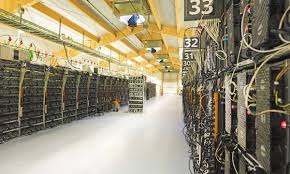

 ?
?
